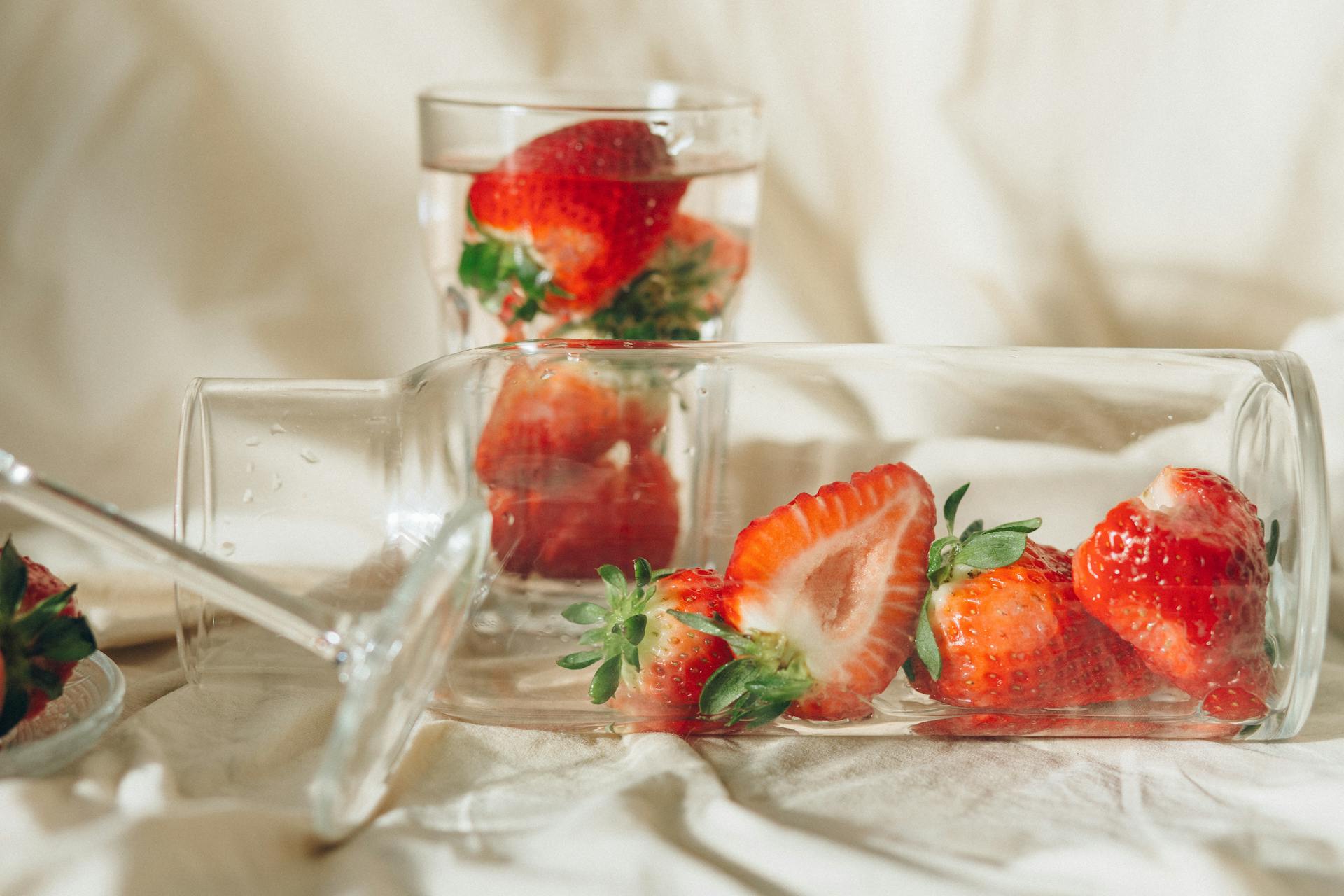
The Secret to Peak Freshness: Mastering Strawberry Storage
Strawberries – those juicy red beacons of summer – are a delightful treat. Bursting with flavor and essential vitamins, they add a touch of sweetness to everything from salads and yogurt to jams and pies. But their delicate nature presents a challenge: how to store them properly to retain their freshness and prevent them from spoiling too quickly.
Fear not, strawberry enthusiast! This guide will unveil the secrets to maximizing your strawberry bounty. We’ll delve into the science behind storage, explore various methods, and answer all your burning berry questions.
Tips and Tricks to Store Strawberries?
- If you want to eat them right away, wash and eat. But if you are planning to eat them later , never wash and keep ih the fridge. Always keep them dry.
- Don’t cut the stems while storing. Keeping the strawberries with stems will protect the interior of your berries and prolong the ripening.
- Dont overlay the strawberries. Try to place them on a plate or a tray. This allows for good air circulation and prevents bruising.
- Freezing strawberries can help you save your strawberries for a longer period of time.
- It’s best to store them between 32°F and 34°F.
- Sorting out bad strawberries first can also increase the shelf life of good strawberries.
- Direct sunlight can damage strawberries and accelerate ripening. Store them in a cool, dark place.
Why Is It Important to Store the Strawberries?
Strawberries are a delicate fruit and they’re highly perishable. Improper storage can quickly lead to them spoiling,becoming mushy, moldy, or losing their sweetness and vibrant color. By storing them correctly, you can significantly extend their shelf life and enjoy them at their peak freshness and flavor for several days.
How Exactly Are They Stored?
- Put the strawberries in air-tight glassware. Put them dry and make sure to seal it tight.
- You can place dry strawberries on a dry paper towel in a container and put unwashed strawberries on top.
- Wrap them tightly with plastic wrap or aluminum foil.
- Store strawberries in its original plastic bag or a reusable plastic bag that is slightly open, or with air holes to maintain humidity.
- Don’t eat strawberries that are discolored with large green or white areas that have become soft, or if they are slimy or moldy.
What to Check While Buying Strawberries?
- Look for fresh and firm strawberries without blemishes.
- Look for bright red, uniformly colored berries. Avoid any strawberries with white or green patches, as this indicates they weren’t ripe when picked and won’t be as sweet.
- Medium berries tend to have more concentrated flavor.
- Fresh strawberries should have a sweet, pleasant aroma. Avoid any berries with a sour or off smell.
Did You Know?
- Strawberries are the only fruit with seeds on the outside!
- There are over 600 different varieties of strawberries, each with its own unique flavor, size, and texture.
- There is a Strawberry museum in Belgium. The Fridaeus Struyf Strawberry Museum showcases the fascinating history and cultivation of this beloved fruit.
- Strawberries contain more Vitamin C than oranges.
- May 20th is National Pick Strawberries Day in the US. It’s the perfect excuse to celebrate the season and head out to a strawberry patch for some fresh-picking fun.
- Some believe the malic acid in strawberries can act as a natural teeth whitener.
Ways in Which You Can Wash Your Strawberries?
- Soak strawberries in a vinegar solution . Remember to take 1 part white vinegar and 3 parts water. Let them sit for a few minutes. Drain and pat them dry and place them on a clean paper towel in a glass container.
- You can use Kosher salt. Put kosher salt in a big bowl filled with water and dissolve it. Add strawberries to the water and allow to soak .
- You can soak your strawberries in a baking soda and water solution to clean them. Add 1 tsp. of baking soda to 4 cups of water, and soak your strawberries in a large bowl for five minutes. Then, rinse your strawberries with cold running water and pat them dry.
The Bottom Line
One of the most important things to think about is the berries at the bottom, or simply overcrowding. Strawberries are delicate things with thin skins, and those that bear the weight of the others or get smushed against the sides of the storage container, will expose themselves more quickly to rotting as their soft flesh is punctured, the wet areas welcoming mold, etc.
To get the most life out of your berries, I suggest you: Keep them whole, keep them dry, keep them spaced out (if possible), keep them in the fridge, and keep them covered/in high humidity. That’s the best you can do.

Speak Your Mind